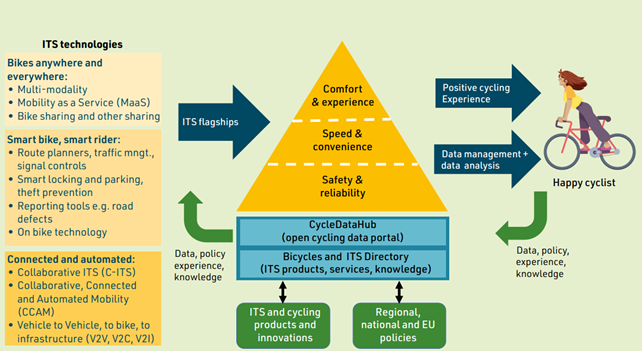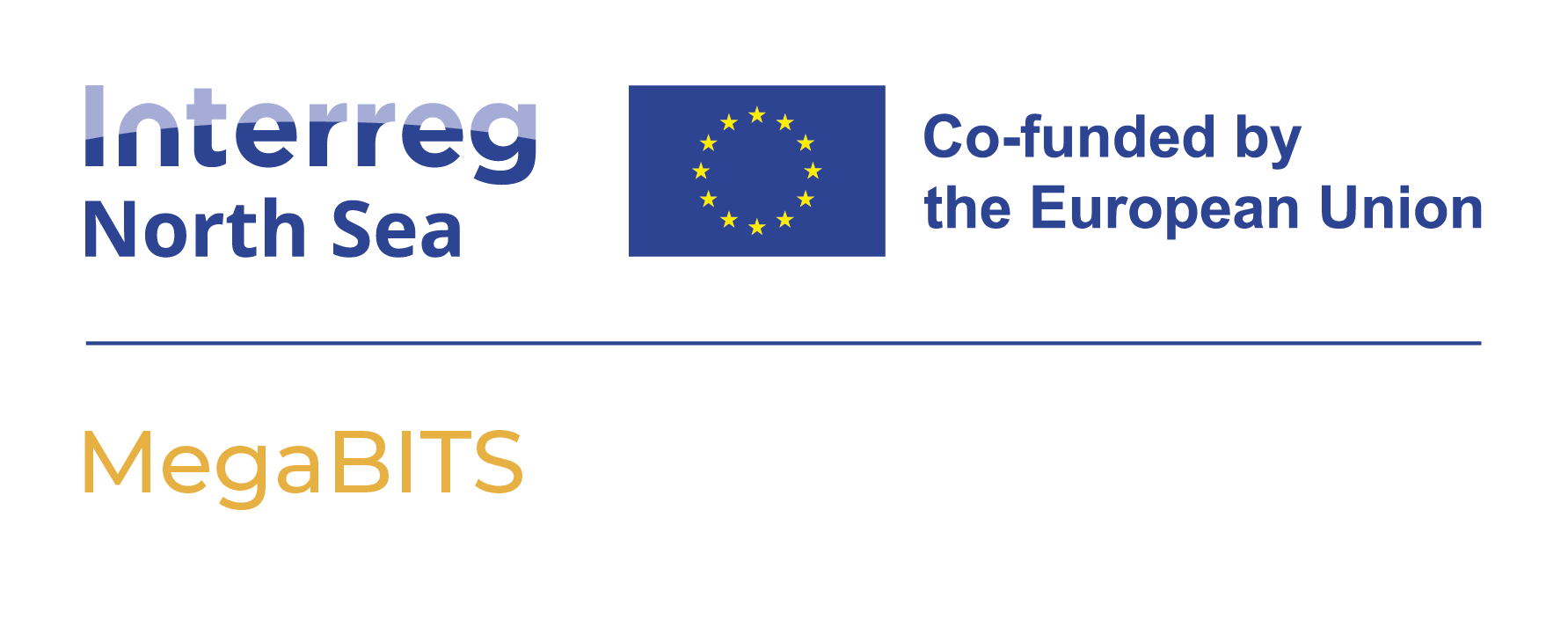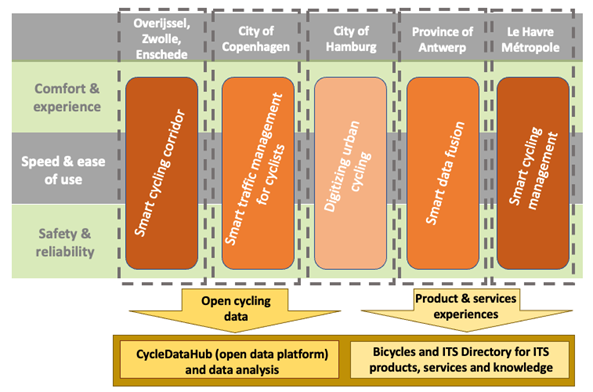A modal shift to green transport is urgently needed as congestion, pollution, growing population, and health problems threaten the liability of North Sea Region's urban areas. Cycling has proven to be a major solution for these challenges. Not only as separate mode, but also as a part of the multimodal transport system. More cycling data is urgently needed to position cycling within the multimodal transport system and to improve the system as a whole.
Bicycles and ITS Directory
The Bicycles and Intelligent Transport Systems Directory (ITS) is a deliverable of the Mobilizing Europe’s Green Ambitions through Bicycles and Intelligent Transport Systems (MegaBITS) project. The Bicycle and ITS Directory is a unique asset in the bicycle and ITS community, as there is currently no other online platform which connects the developers of cycle-specific ITS technologies (products and services) with public authorities or other businesses. This Directory is a one-of-a-kind tool for the cycling industry, serving to develop a full ecosystem for connected cycling. It does so by connecting the developers and innovators of cycling-specific technology with public authorities or other businesses.
For businesses, the Bicycle and ITS Directory provides a showcase for pioneering technology, enabling greater visibility for procurement and tendering opportunities by public authorities. For cities and governments, the Bicycle and ITS Directory is a procurement tool kit that facilitates a clearer picture of exactly what is currently available in the connected cycling market. Furthermore the Bicycle and ITS Directory provides access to ITS and cycling knowledge, for example on best practices and (EU) regulation.
Regions involved in MegaBITS already show a high bicycle use (NLD, DNK, BEL) or have ambition to increase bicycle use (DEU, SWE, FRA). Intelligent Transport Systems are important tools to achieve this, while also producing the desired cycling data.
Therefore, the goal of MegaBITS is clear:
- To achieve a 10% increase in cycling kms within target groups and an 8.8% decrease in CO2 emissions.
To achieve this, MegaBITS will focus on five flagship pilot projects across seven cities/regions. Each flagship has its own theme and will address the digitalisation of cycling in a unique way.
The Flagship projects consists of the following:
- Smart Cycling Corridor (Province of Overijssel, City of Zwolle, City of Enschede)
- Smart Traffic Management for Cyclists (City of Copenhagen)
- Digitizing Urban Cycling (City of Hamburg)
- Smart Data Fusion (Province of Antwerp)
- Smart Cycling Management (Le Havre Seine Métropole).
Each flagship consists of several coherent ITS projects focused on improving the cycling conditions with respect to
- Safety & Reliability,
- Speed & Ease of Use,
- Comfort & Experience.
At the same time these ITS implementations for cyclists will provide
- Data to the Cycledatahub
- Products, Services and Knowledge to The Bicycles and ITS Directory.
This is shown graphically in the figure below.
The approach of MegaBITS is derived from the Maslow’s hierarchy of needs (Maslow Pyramid) and Herzberg’s Two-factor theory, the Province of Overijssel has developed a similar hierarchy of needs for cyclists, showing the factors influencing modal shift from car to bike (figure below).

Firstly, cycling has to be safe and reliable, secondly it should be (relatively) fast and convenient (clear routes, easy bicycle parking, etc). Once these levels have been matched, comfort and user experience become important.
The Bicycle Pyramid forms the basis of the MegaBITS proposal, where the seven cities and regions have different levels of bicycle infrastructure, bicycle use and bicycle policy. Each demonstration site will have different priorities on the Bicycle Pyramid and therefore a different focus of their flagship.
CycleDataHub (CDH)
The new CDH will be in line with the EU data space initiatives and will allow for expansion and collaboration with other mobility subdomains and other fields. The MegaBITS flagships (WP1) will provide cycle counting data that will be linked to the CDH, aggregated, integrated, analysed and visualised. The CDH itself serves as an open platform for all partners and stakeholders that enables exchanging data. The current version of the CDH can be found here.
MegaBITS is an Interreg project supported by the North Sea Programme of the European Regional Development Fund of the European Union.
For information regarding our use of personal data (event participants, newsletter subscriptions, etc.), cookies and other data, read our privacy statement.


